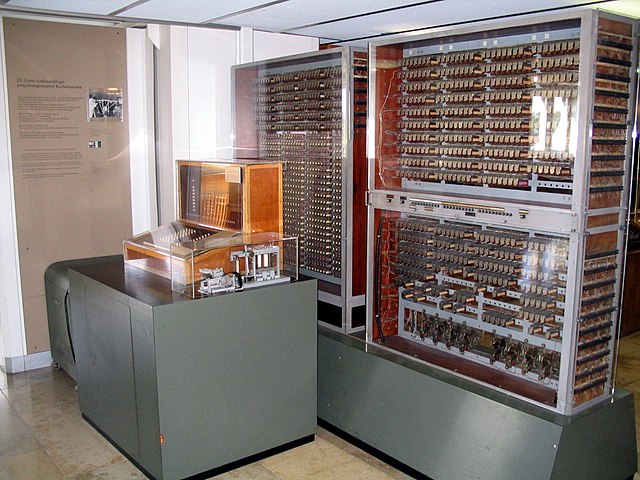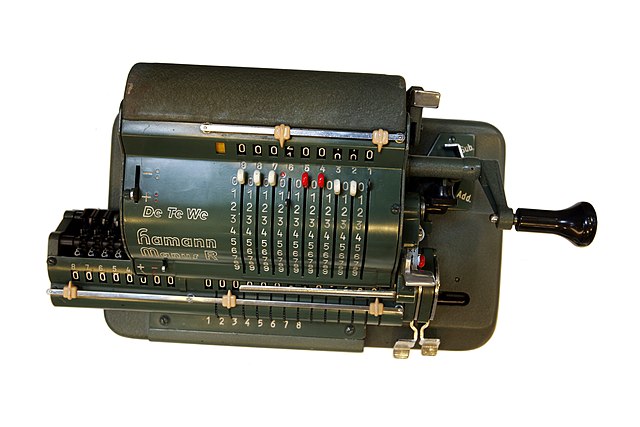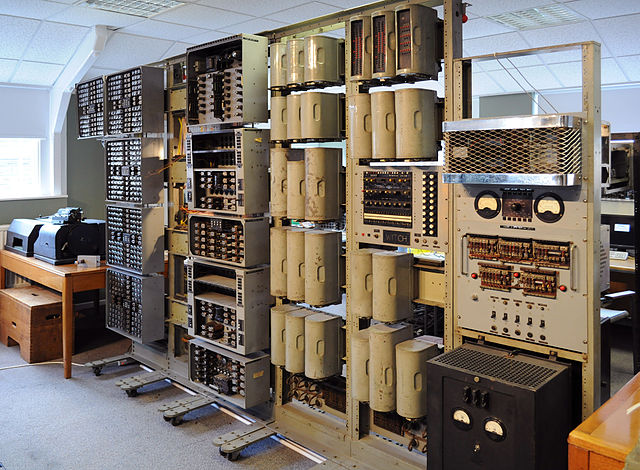The Z3 was a German electromechanical computer designed by Konrad Zuse in 1938, and completed in 1941. It was the world's first working programmable, fully automatic digital computer. The Z3 was built with 2,600 relays, implementing a 22-bit word length that operated at a clock frequency of about 5–10 Hz. Program code was stored on punched film. Initial values were entered manually.
Zuse Z3 replica on display at Deutsches Museum in Munich
Electromagnetic memory (relays) included in the Z3, Z5 and Z11
Drawing of the Z3 computer from Zuse's 1941 patent.
Z3 reconstruction in 2010 by Horst Zuse
A mechanical computer is a computer built from mechanical components such as levers and gears rather than electronic components. The most common examples are adding machines and mechanical counters, which use the turning of gears to increment output displays. More complex examples could carry out multiplication and division—Friden used a moving head which paused at each column—and even differential analysis. One model, the Ascota 170 accounting machine sold in the 1960s, calculated square roots.
Hamman Manus R mechanical computer, produced in Germany by the DeTeWe company between 1953 and 1959
Curta Calculator
Harwell Dekatron







